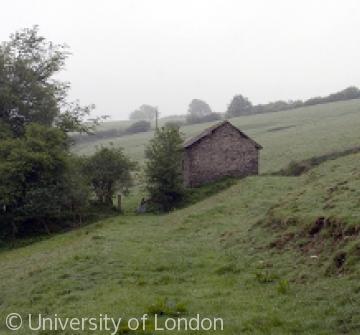Marshclose barn, Hawkridge

Marshclose barn, Hawkridge Marshclose barn, Hawkridge is a bank barn, one of the improvements introduced to Exmoor during the 18th century along with field gutters, to flush manure onto pastures to improve them, and open fronted linhays. Bank barns developed in Cumbria in the 17th century and were later introduced in several upland areas including Exmoor. They are built into steeply sloping hillsides in order to provide level access to both storeys. Hay and fodder could be carted to the upper storey reducing labour. In winter feed could be thrown down through a trapdoor to the animals housed below. Bank barns were incorporated into farm yards including Cloggs in Hawkridge and further afield at Leigh Barton, Old Cleeve and Silcombe near Porlock. The latter is a very large barn dating from the 1860s. More modest barns like that at Marshclose were built on Exmoor away from farmsteads as winter outfarms. The stock could be penned in winter in a large yard in front of the barn with access to the lower floor in severe weather. Hay and fodder stored above could be quickly thrown down to the mangers below.
Content generated during research for the paperback book 'Exmoor: The making of an English Upland' (ISBN 13 : 978-1-86077-597-0 ) for the England's Past for Everyone series


